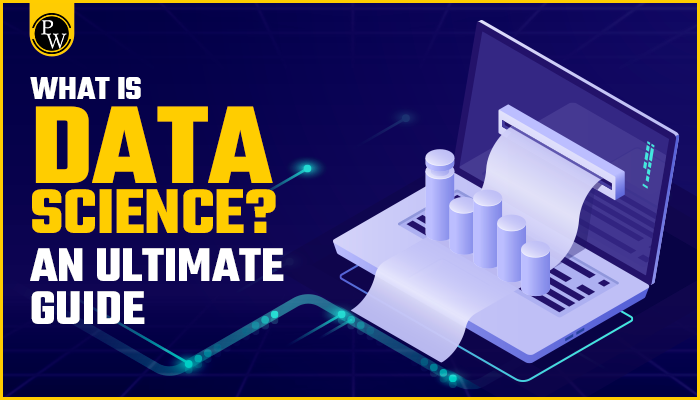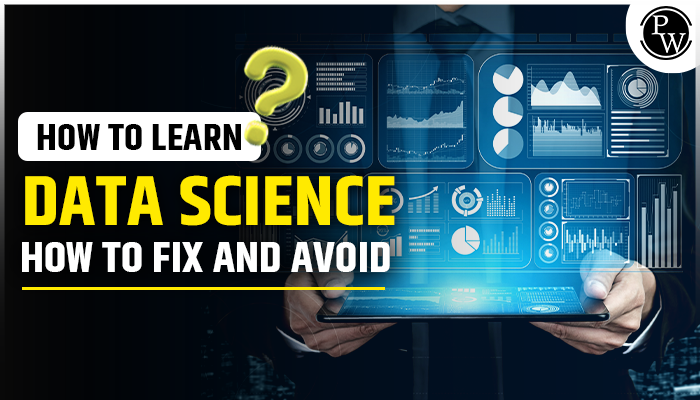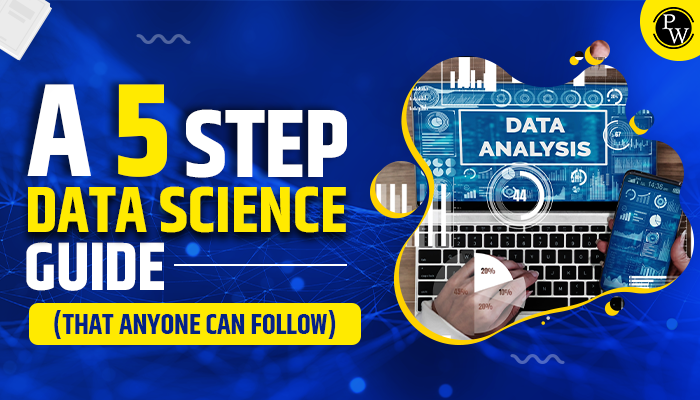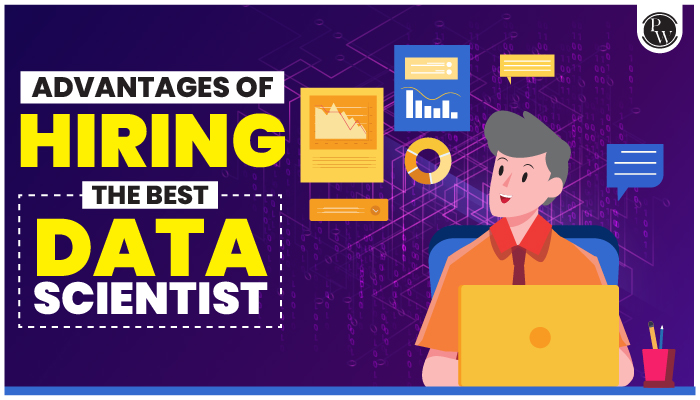Data science insights, among other things, assist firms in boosting operational efficiency, finding new business prospects, and improving marketing and sales campaigns. They can eventually lead to competitive advantages over commercial rivals.
Data science encompasses a wide range of fields, including data engineering, data preparation, data mining, predictive analytics, machine learning, and data visualization, in addition to statistics, mathematics, and software development.
Furthermore, many firms increasingly rely on citizen data scientists, who might include BI specialists, business analysts, data-savvy business users, data engineers, and other individuals who do not have a formal data science background.
An Ultimate Guide to Data Science course handbook covers what data science is, why it is essential to businesses, how it works, the commercial advantages it brings, and the obstacles it creates. There is also information on what data scientists perform and the skills they need, as well as an overview of data science applications, tools, and approaches.
Recommended Course
- Decode DSA with C++
- Full Stack Data Science Pro Course
- Java For Cloud Course
- Full Stack Web Development Course
- Data Analytics Course
What is Data Science?
Data science is the study of data in order to derive valuable business insights. It is a multidisciplinary approach to data analysis that integrates ideas and methods from mathematics, statistics, artificial intelligence, and computer engineering.
This analysis assists data scientists in asking and answering questions such as what occurred, why it occurred, what will occur, and what can be done with the information.
What is the Significance of Data science?
Data science is vital in almost all elements of corporate operations and strategies. For example, it gives information on clients that enables businesses to design more effective marketing campaigns and targeted advertising in order to enhance product sales.
It assists in financial risk management, the detection of fraudulent transactions, and the prevention of equipment malfunctions in manufacturing facilities and other industrial settings. It aids in the prevention of cyber-attacks and other security concerns in IT systems.
Data science projects may improve the operational management of supply chains, product inventories, distribution networks, and customer support. On a more fundamental level, they point to enhanced efficiency and cost savings.
Data science also helps businesses to develop business plans and strategies based on an in-depth examination of consumer behavior, industry trends, and competition. Without it, organizations risk missing out on opportunities and making poor judgments.
Data science is also important in domains other than typical business operations. Its applications in healthcare include medical condition diagnosis, picture analysis, therapeutic planning, and medical research.
Data science is used by academic institutions to track student performance and enhance their marketing to potential students. Data science is used by sports teams to monitor player performance and design game strategies. Government and public policy groups are also frequent consumers.
Process and lifecycle of data science
A range of data collecting and analysis stages are involved in data science initiatives. Donald Farmer, principal of analytics firm TreeHive Strategy, highlighted the following six major processes in an essay describing the data science process:
- Determine a business hypothesis to test.
- Collect and prepare data for analysis.
- Experiment with various analytical models.
- Choose the best model and test it on the data.
- Inform corporate executives of the findings.
- Deploy the model for continuous usage with new data.
According to Farmer, the method turns data science into a scientific pursuit. However, he noted that data science efforts in corporate companies \”will always be most productively focused on basic commercial realities\” that may help the firm.
As a result, he suggests that data scientists work on projects with business stakeholders throughout the analytics lifecycle.
Advantages of Data Science
Jessica Stauth, managing director for data science in Fidelity Labs at Fidelity Investments, stated in an October 2020 webinar hosted by Harvard University\’s Institute for Applied Computational Science that there is a very obvious link between data science effort and business results.
She mentioned possible company benefits such as improved ROI, more revenue, more effective operations, shorter time to market, and increased customer engagement and satisfaction.
In general, one of the most significant advantages of data science is that it empowers and facilitates improved decision-making. Companies who invest in it may incorporate quantitative, data-driven information into their business choices.
Such data-driven decisions should ideally result in improved company performance, cost savings, and easier business processes and workflows.
Data science\’s unique commercial benefits differ depending on the organization and sector. Data science, for example, helps customer-facing businesses discover and refine target groups.
Customer data may be mined by marketing and sales teams to boost conversion rates and build targeted marketing campaigns and promotional offers that result in increased sales.
Reduced fraud, more effective risk management, more profitable financial trading, enhanced factory uptime, better supply chain performance, stronger cybersecurity defenses, and improved medical outcomes are some of the benefits in other circumstances.
Data science also allows for real-time analysis of data as it is created; learn about the benefits of real-time analytics, including speedier decision-making and better business agility, in another Farmer post.
PW Skills Provide Various Platform
Applications of Data Science
The use of Data science is to investigate data in four ways:
Descriptive analysis
The descriptive analysis looks at data to learn about what happened or is happening in the data context. Data visualizations such as pie charts, bar charts, line graphs, tables, or produced narratives distinguish it.
For example, an airline booking service may keep track of the number of tickets purchased each day. For this service, the descriptive analysis will disclose booking spikes, booking slumps, and high-performing months.
Diagnostic Analysis
A diagnostic analysis is a thorough evaluation of facts to determine why something occurred. Drill-down, data discovery, data mining, and correlations are some of the approaches used.
On a particular data collection, many data operations and transformations may be conducted to identify distinct patterns in each of these approaches.
For example, the flying service may focus on a particularly strong month to better understand the booking surge. This might lead to the revelation that a large number of clients visit a specific city to attend a monthly athletic event.
Predictive Analysis
The predictive analysis makes accurate estimates about data patterns that may emerge in the future using past data. Machine learning, forecasting, pattern matching, and predictive modeling are some of the approaches used. Computers are trained to reverse engineer causality relationships in data in each of these ways.
For example, at the start of each year, the airline service team may utilize data science to forecast flight booking patterns for the future year. The computer software or algorithm may use historical data to forecast booking increases for specific places in May.
Because the corporation predicted their customer’s future travel needs, they could begin targeted advertising for those destinations in February.
Prescriptive analytics
Prescriptive analytics is the next level of analytics beyond predictive analytics. It not only forecasts what is likely to happen, but it also offers the best way to respond to that event.
It may assess the probable consequences of several options and propose the optimal course of action. Prescriptive analytics employ graph analysis, modeling, complicated event processing, neural networks, and machine learning recommendation engines.
To return to the flight booking example, the prescriptive analysis may look at previous marketing initiatives to maximize the benefit of the impending booking increase.
A data scientist might forecast booking results for varying amounts of marketing investment across many marketing channels. These data projections would increase the flight booking company\’s trust in their marketing selections.
Conclusion
Young students can develop algorithmic thinking and design skills both inside and outside of the classroom by using real-world examples. On the Physics Wallah Blog, you can read about Data science and illustrations of various such disciplines.
Frequently Asked Questions
Q1. What are the most important skills for a data scientist to have?
Ans: Mathematics and statistics, machine learning, predictive modeling, data visualization, text mining, programming (including Python, R, SQL, Spark, Hadoop, and Julia), and many more skills are widely used by data scientists. Data scientists must also have soft skills, particularly oral and written communication, in order to explain frequently complicated topics to stakeholders.
Q2. Is an undergraduate degree in science or engineering required for the USD master’s degree program?
Ans: The majority of candidates to USD\’s master\’s degree program in Applied Data Science hold a bachelor\’s degree in science, mathematics, engineering, information technology, computer science, or a STEM discipline.
However, persons with a bachelor\’s degree in another subject (such as business, for example) are welcome to apply; such applicants must submit a written statement explaining how their abilities and expertise are applicable to the program.
Q3. What are the various data science technologies?
Ans: Practitioners of data science deal with complicated techniques such as:
- Artificial intelligence: Machine learning models and accompanying software are used for predictive and prescriptive analysis.
- Cloud computing: Cloud computing has provided data scientists with the flexibility and processing capacity needed for advanced data analyses.
- Internet of Things (IoT): It refers to many gadgets that may connect to the internet automatically. These gadgets collect information for data science projects. They create large amounts of data that may be utilized for data mining and extraction.
- Quantum computing: Quantum computers are capable of doing complicated computations at a rapid rate. Skilled data scientists utilize them to create complex quantitative algorithms.






